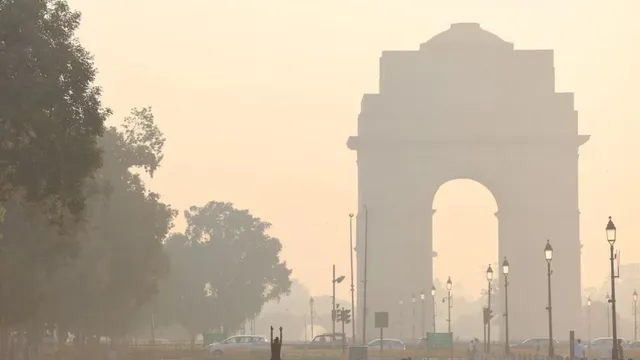- By Priyanka Koul
- Tue, 21 Oct 2025 07:44 AM (IST)
- Source:JND
Delhi-NCR AQI: Amid the festive fervour sweeping across the National Capital Region (NCR) and the rest of the country, Delhi woke up under a thick blanket of smog and toxic air. The Air Quality Index (AQI) in the capital spiraled into the ‘severe’ category on Monday morning, with the average AQI climbing to 451 nearly twice the national threshold. Delhi's air quality is deteriorated, with most of the monitoring stations marked in the 'red zone'.
Delhi AQI going for a ride after Diwali night!#Delhipollution #DelhiAQI #Diwali2025 #airquality pic.twitter.com/rVq6m9Iktt
— Nikita Bishay (@BishayNikita) October 21, 2025
While Diwali night had already seen air quality deteriorate to the 'very poor' level, conditions worsened overnight. Cities like Noida and Gurgaon fared no better, recording AQI levels of 407 and 402, respectively.
Delhi-NCR AQI Level: Punjabi Stood Up At 999
The Central Pollution Control Board (CPCB) and its SAMEER app reported alarming numbers from across the city. Punjabi Bagh registered an AQI of 999, the highest possible reading while Narayana stood at 611. Rohini and Anand Vihar hit the upper limit at 500, Central Delhi recorded 409, and Noida hovered around 392.
#WATCH | Visuals from the ITO as GRAP-2 invoked in Delhi.
— ANI (@ANI) October 21, 2025
The Air Quality Index (AQI) in the region was recorded at 259, in the 'Poor' category, this morning. pic.twitter.com/vPA2aXJszX
According to IMD Forecast partly cloudy skies are expected in several areas during the morning hours.
Data from the Decision Support System (DSS) revealed that vehicles were responsible for about 15.6 per cent of the pollution in Delhi on Monday. Industries and other local sources contributed around 23.3 per cent.
Delhi-NCR AQI: GRAP 2 Implemented
With pollution levels surging, the Commission for Air Quality Management (CAQM) has implemented Stage II of the Graded Response Action Plan (GRAP) across the Delhi-NCR region. This phase includes measures such as banning construction activities that generate dust, restricting the use of diesel generators, and ramping up road-cleaning efforts. If the air quality worsens further, authorities may invoke Stage III, which brings stricter curbs into force.
Earlier this month, the Supreme Court had permitted the use of green firecrackers in Delhi-NCR but only within limited time slots: 6 am to 7 am, and 8 pm to 10 pm on Diwali night. Despite these restrictions, the post-festival air quality suggests enforcement may have fallen short. Thirty-six out of 38 monitoring stations recorded pollution levels in the 'red zone', indicating 'very poor' to 'severe' air quality across Delhi.
An AQI between 0 and 50 is considered "good", 51 to 100 "satisfactory", 101 to 200 "moderate", 201 to 300 "poor", 301 to 400 "very poor", and 401 to 500 "severe".
( With PTI Inputs )

